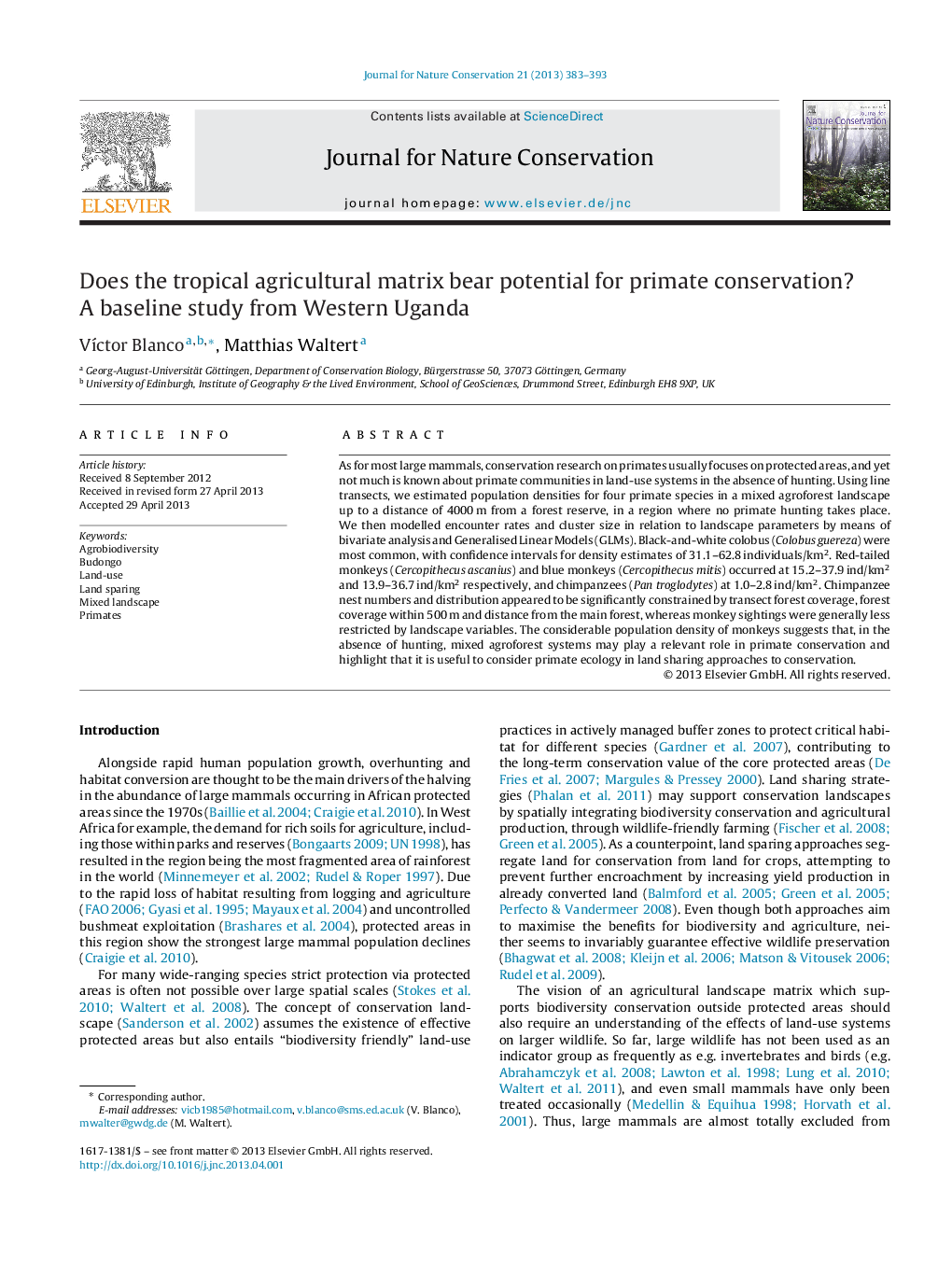| Article ID | Journal | Published Year | Pages | File Type |
|---|---|---|---|---|
| 4399895 | Journal for Nature Conservation | 2013 | 11 Pages |
As for most large mammals, conservation research on primates usually focuses on protected areas, and yet not much is known about primate communities in land-use systems in the absence of hunting. Using line transects, we estimated population densities for four primate species in a mixed agroforest landscape up to a distance of 4000 m from a forest reserve, in a region where no primate hunting takes place. We then modelled encounter rates and cluster size in relation to landscape parameters by means of bivariate analysis and Generalised Linear Models (GLMs). Black-and-white colobus (Colobus guereza) were most common, with confidence intervals for density estimates of 31.1–62.8 individuals/km2. Red-tailed monkeys (Cercopithecus ascanius) and blue monkeys (Cercopithecus mitis) occurred at 15.2–37.9 ind/km2 and 13.9–36.7 ind/km2 respectively, and chimpanzees (Pan troglodytes) at 1.0–2.8 ind/km2. Chimpanzee nest numbers and distribution appeared to be significantly constrained by transect forest coverage, forest coverage within 500 m and distance from the main forest, whereas monkey sightings were generally less restricted by landscape variables. The considerable population density of monkeys suggests that, in the absence of hunting, mixed agroforest systems may play a relevant role in primate conservation and highlight that it is useful to consider primate ecology in land sharing approaches to conservation.
